What is land pollution? It’s when waste materials are deposited onto, or into, the ground of our planet. In short, it’s destructive contamination of land caused either directly, or indirectly, by humans.
These deposits change the land over time – soil and water supplies can become contaminated, and when these pollutants build-up, the levels can become a danger to public health and impact soil quality for growing food.
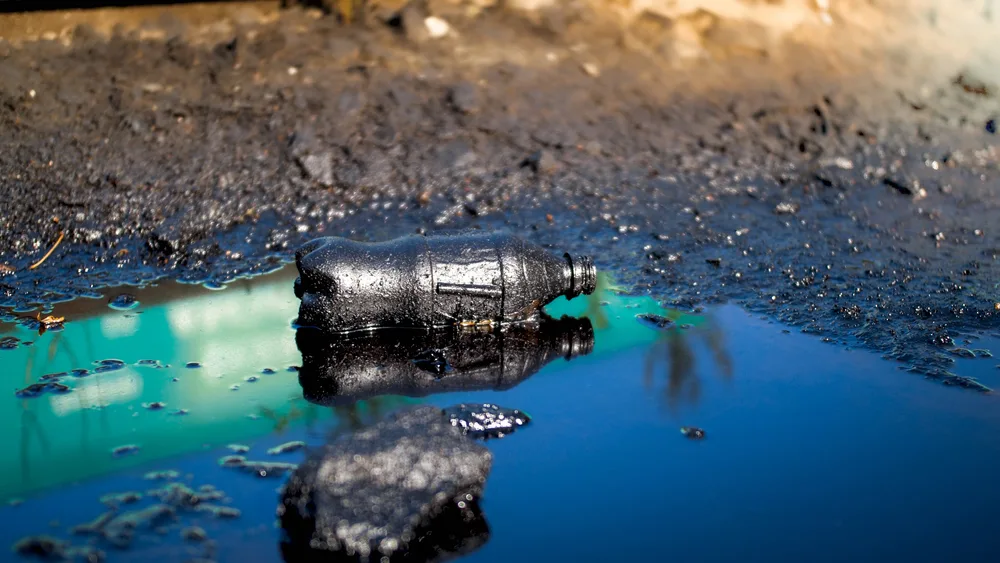
It’s a significant issue that affects us all, therefore, it’s important to tackle these issues both individually and collectively. Most pollution occurs from either commercial or household waste, so it’s vital that we all do our bit and act before it’s too late.
For further interesting facts about land pollution and ground pollution facts, read on.
Roughly 60% of all plastic produced is still in the environment
The mass production of plastics began in the 1950s, and according to a 2017 study, around 60% of such plastics have been discarded over time as waste in landfills, therefore, entering the natural environment.
When most plastics reach landfill, they don’t break down very easily as they aren’t natural products that can be broken down organically. This means that most plastics that have ever been in circulation and have ended up in landfill are still there today, and some can take up to 400 years to fully degrade.
Even while armed with this information and noticing the damage it’s doing to our planet, a huge 91% of plastic waste generated is still not recycled by consumers or corporations. To put this in perspective, over time, globally, only around 9% of all plastics have been recycled and of these, only 10% have been recycled more than once.
76% of litter found on roadways is from pedestrians and motorists
Keep America Beautiful released a study in 2021 on litter in the U.S.A. Their findings concluded that there were more than 2,000 pieces of litter per mile on roads and in waterways, and in total, they found almost 50 billion pieces of litter including 207 million used PPE items.
They also discovered that an estimated 76% of roadside rubbish was litter dropped by pedestrians and drivers.
Incinerators disproportionately impact BIPOC communities
A 2019 study by the Tishman Environment and Design Center found that 79% of incinerators across the US are found in environmental justice communities.
A huge 44 incinerators (roughly 58%) in the US are placed in communities where the population comprises at least 25% of people of color.
Studies have shown that pollutants emitted from these incinerators can be toxic and compounds can contaminate the air, water, soil, and food chains, having a detrimental impact on the health of these communities.
The worst plastic polluter in the world is Coca-Cola
According to data from Statista, Coca-Cola dumps 200,000 metric tons of plastic waste annually. In Mexico, around 75,000 metric tons is produced annually – enough to cover 12 football pitches daily.
Other examples of land pollution offenders include PepsiCo and Nestle, plus a whole host of other global brands whose business models are built around single-use plastics.

The climate crisis has displaced over 10 million people in 6 months
The IDMC (Internal Displacement Monitoring Center) statistics show that there were 24.9 million new people displaced from over 140 different countries in the year 2019.
This was a result of 1,900 natural disasters, believed to be caused by climate change. This is the highest number recorded since 2012 and is nearly triple the value of people displaced by conflict and violence.
Between 1973 and 2011 sperm counts in the Western world had fallen 59%
This shocking statistic was discovered in 2017 by Swan et al. The cause of the decline in sperm counts is believed to be due to chemicals that we are exposed to daily in modern life.
These include plastics, pesticides, ATM receipts, and cosmetics. These pollutants disrupt natural hormonal balances and cause a number of health issues.
Cigarette filters can take up to 500 years to decompose
One of the worst causes of land pollution and water contamination is cigarette butts. A single cigarette butt can contaminate up to 500 liters of water and can even kill a fish.
This is because the plastics used to create cigarette butts (cellulose acetate), decompose really slowly, taking between 500 and 1000 years to completely break down.
Worryingly, a large percentage of Americans don’t consider cigarette butts as a form of litter according to a survey conducted by Keep America Beautiful, and many are happy to discard them anywhere.
This leads to the pollution of rivers, beaches, and oceans, plus, they are often mistaken for food by birds and marine life. As they contain toxic chemicals, they can cause a lot of harm, not just to people, but to nature, wildlife and marine life, threatening the existence of several species.
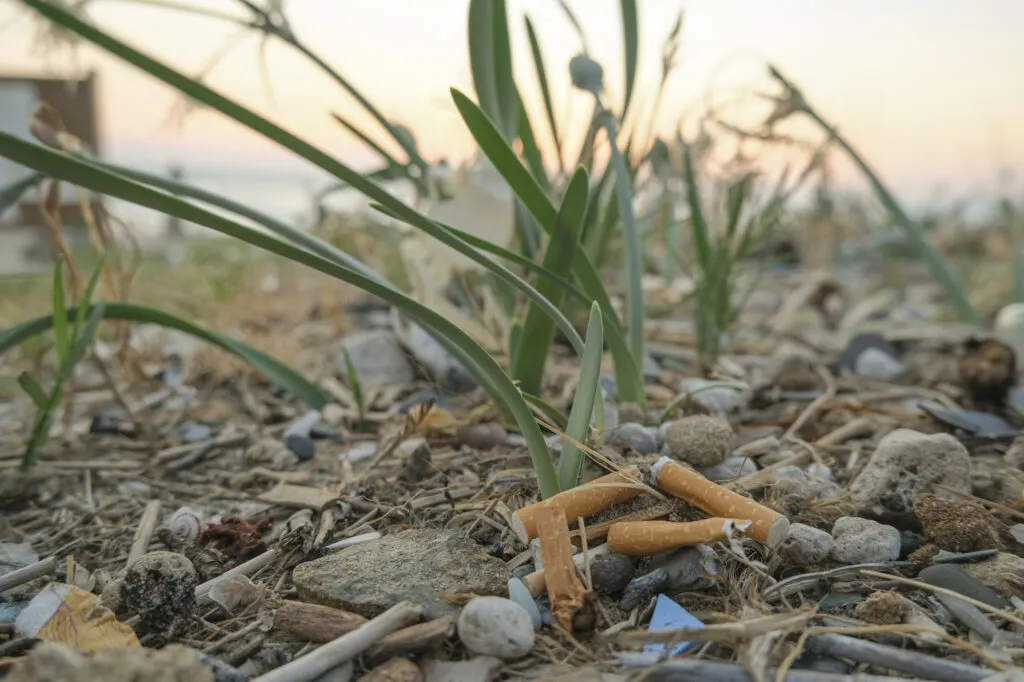
Microplastics have been found in the placentas of unborn babies
These were discovered through the use of placental analysis across four healthy women with normal births. The microplastics are believed to have been inhaled or consumed by the pregnant woman at some time either before becoming pregnant or during the pregnancy.
The particles found were 0.01mm in diameter and are believed to be small enough to enter the baby’s bloodstream.
Biodegradable plastics can take years to decompose
Biodegradable plastics do naturally break down over time, but the name is misleading. They can take many years to decompose under natural conditions and they can leave toxic residue and some microplastics behind if not disposed of correctly.
Many biodegradable plastics are broken down in labs with specialist compost facilities and high temperatures. However, even under these conditions, the plastics can take around 6 months to decompose.
The United States produces 17% of the world’s plastic waste
While the United States population only makes up 4% of the global total, the country produces more than 17% of global plastic waste. It is estimated that the citizens are third in the world when it comes to producing plastic pollution in the oceans.
Kara Lavender Law from the Sea Education Association suggests that these results are due to high-income rates in the U.S. coupled with high consumption levels.
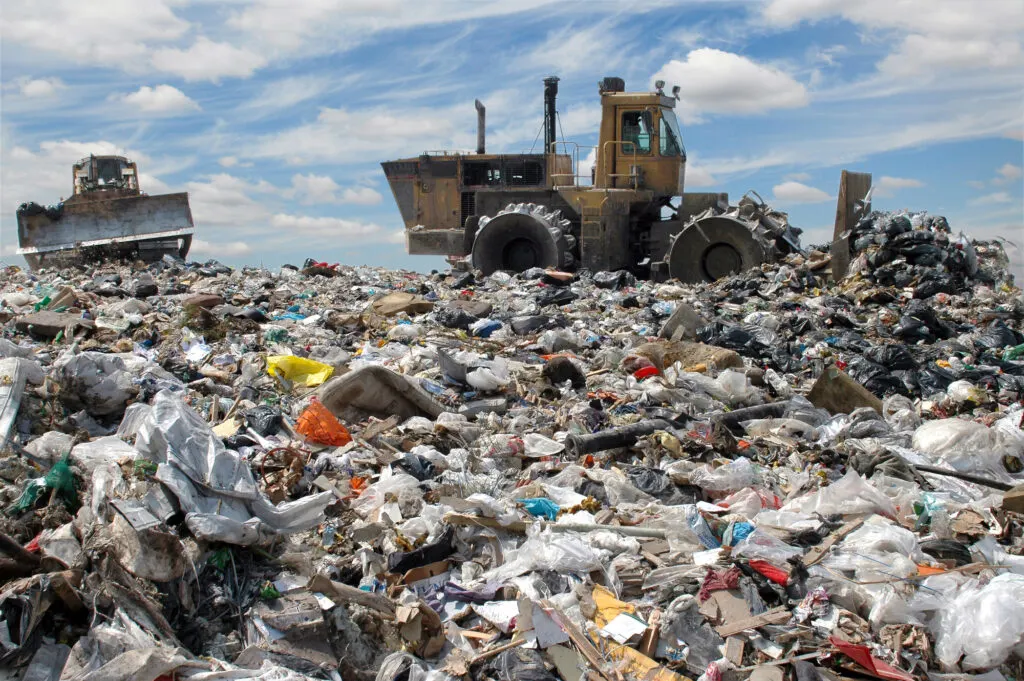
Around 300 million tons of plastic are produced every year
The IUCN (International Union for the Conservation of Nature) states that of the above 300 million tons, half are single-use items.
They estimate that a whopping 8 million tons of plastic end up in the oceans each year and contribute to 80% of all marine debris.
Land pollution causes the planet to lose 24 billion tons of topsoil annually
Here are some interesting facts about soil pollution. Over the past 150 years, over half of the earth’s topsoil has been lost. This is caused by a number of factors including climate change, erosion, pollutants, and urbanisation.
An increase in pollutants found in water and agrochemicals has contributed heavily to the decline. Over time, both have diminished the fertility of the land, making it useless for growth and leaving it unsustainable. The land is no longer able to feed people or wildlife, contributing to the decline of many species.
In 2020, an estimated 18.6 million tons of clothes entered landfills
According to a study conducted by the Ellen MacArthur Foundation, the fast fashion industry is one of the biggest contributors to waste found in landfill sites across the world. The study states that the average person disposes of 60% of new clothing within the first year of ownership.
These shocking statistics are not showing any signs of slowing either, as the amount of clothing waste is believed to reach 150 million tons by 2050. To put this in perspective, the average U.S. citizen is believed to throw away 37 kgs of clothing each year.
But it’s not just individuals to blame, several fast fashion companies are known to throw out, or even burn unused stock too!
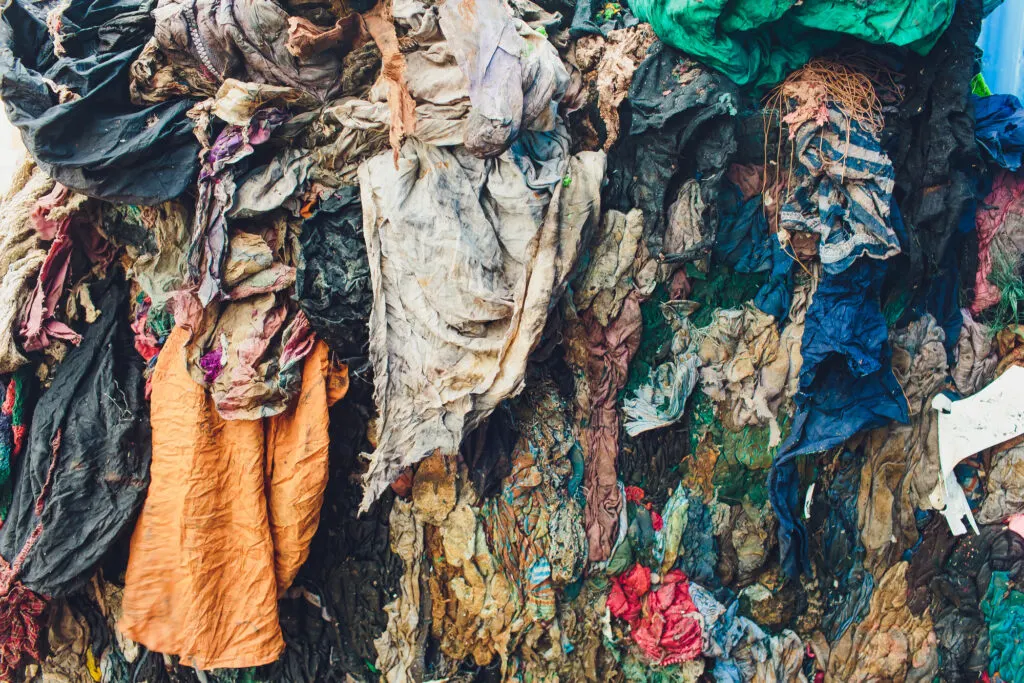
There are mushrooms known as Pestalotiopsis microspora that convert plastic to organic matter
You may not know this, but there is a rare mushroom species found in the Amazonian rainforest that feeds on polyurethane, which is a fundamental element in plastic.
These anaerobic fungi then convert the compound into organic matter. It has a great potential to help clean up the many landfills across the Earth’s surface.
There is even the potential to create at home recycling kits and community recycling areas which utilize the Pestalotiopsis microspora.
In another ground-breaking discovery by Katharina Unger of Utrecht University, other mushrooms will feed off of plastics too.
Oyster mushrooms are one such species, and they are safe for humans to eat. There is no plastic left in the mushrooms for humans to ingest, making them totally safe.
64% of global agricultural land is at risk for pesticide pollution
One of the main causes of land pollution is pesticides. A team of researchers from the University of Sydney led by Fiona Tang discovered that around 24.5 million square kilometers of global agricultural land is at risk of pollution through the use of pesticides.
This equates to roughly 64% of agricultural land. A sizeable 31% has been categorized as at high risk, many of which are high in bio-diversity with many wildlife species living there.
High consumption lifestyles are a factor in land degradation
In regions of southern Asia and Central Africa, many forests are lost to land degradation, and globally, since 1900, we have lost 87% of wetlands due to the same issue.
This is partially due to the palm oil plantations in the above regions. Palm oil is used in a number of products we consume on a daily basis such as lipsticks, shampoos, pizza dough, cookies, and washing detergents.
Unfortunately, these plantations have caused many effects of land pollution, air and water pollution, deforestation, and have caused a decline in endangered species.
Freshwater sources can also be contaminated with liquid waste and carbon dioxide is released into the atmosphere from the burning forests, which also leads to climate change.

Many people globally still don’t have access to waste disposal systems
This can lead to many citizens disposing of their trash in the open air in dumps, especially in low-income countries.
These actions can cause a multitude of problems. If near residential areas, it can affect the local environment, and if outside towns and cities, it can have a detrimental effect on wildlife and marine life.
A lack of access to proper waste disposal systems can lead to air and land pollution, which is harmful to health, and of 50 of the largest open-air dumping sites in the world, almost half of them contain hazardous waste products.
There are almost 1300 landfill sites in the U.S. alone
Landfills can cause a variety of environmental issues too, and there can be severe health effects of land pollution for those who live within a few miles of the sites.
Studies claim that 78% of people living close to landfill sites suffer from air pollution, flu-type illnesses, eye irritation and the continuous inhalation of toxins that can cause serious illnesses, including asthma, respiratory infections, cancers, and low birth weights in new-born babies.
Landfills have been causing fires in the U.S.
This is mainly caused by heat generated from large amounts of gas emissions causing harm to the environment. In fact, since 2001, over 8,000 fires have occurred on American landfill sites.
To add to this problem, it’s well-known that Lithium-ion batteries found in many technology devices are an explosion and fire hazard risk when dumped in landfills. Currently, only 5% of these batteries are recycled, and most of them do end up in landfill.
If you don’t already know, Lithium-Ion batteries are the ones found in most laptops, smartphones, power chargers and other technology devices. Although bills are being passed to attempt to counteract these issues, with the number of devices now in a single home increasing, they need to make changes quickly to avoid disaster.
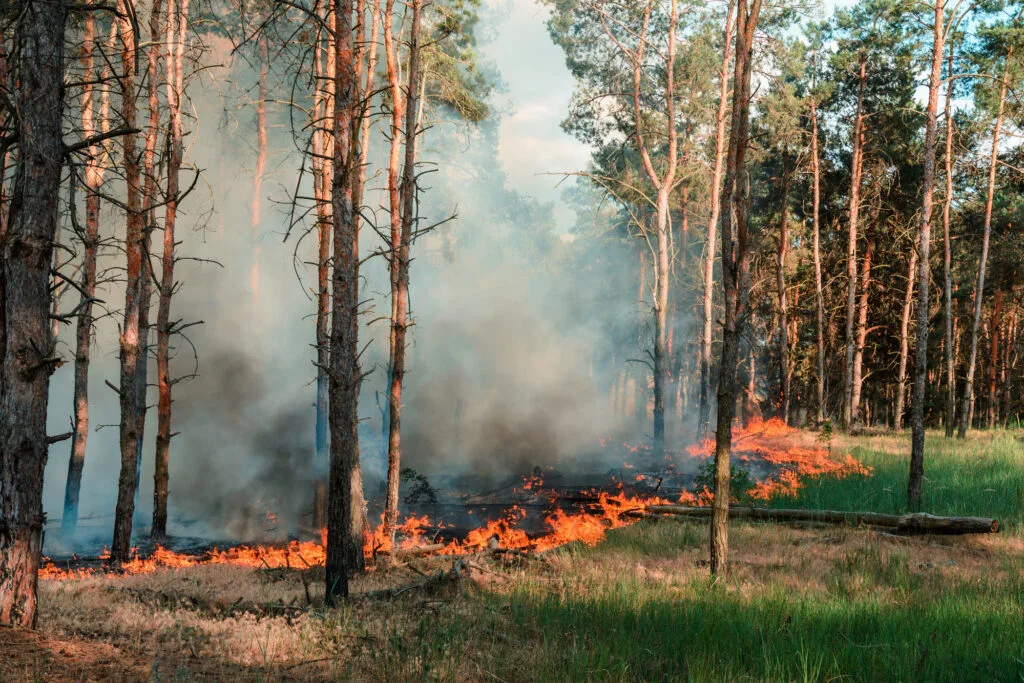
Soil pollution can have a drastic impact on Planet Earth
Here are some soil pollution facts. Soil pollution causes crops to cease growing – humans and wildlife begin to lack the nutrients we need to survive, and as we come into contact with pollutants, it can cause us to develop different illnesses and diseases.
Causes of soil pollution include climate change, agricultural pesticides, deforestation, and human waste. The latter, often destined for sewers is disposed of improperly in some countries and either ends up in landfill or in the soil. Then there is industry – mining and manufacturing which are major sources of soil pollution.
This may all seem like doom and gloom, but what is the answer? It seems pretty straightforward, but it has to be a collective responsibility. Consume less.
For every cardboard box we have delivered with a new tech device inside, for every item of clothing we discard, for every cookie we eat or lipstick we wear made with palm oil, and for every piece of food we throw away, we are contributing to the problem, not the solution.
Hopefully, now you’ve read this article, you are now more aware of the facts about land pollution, and how much damage it can have on the environment, people, wildlife, and the planet as a whole.
We encourage every individual to make a meaningful, positive change in their own lives so that we can all live happier and healthier on planet earth. If you need any more information about land pollution and want to know how to help, feel free to contact us.
